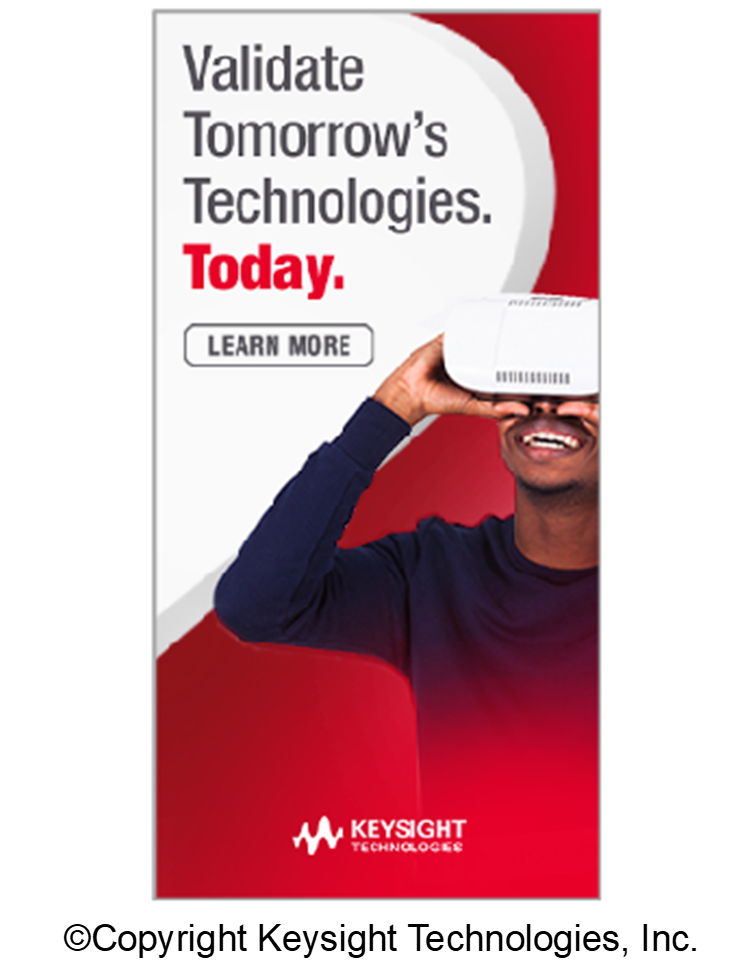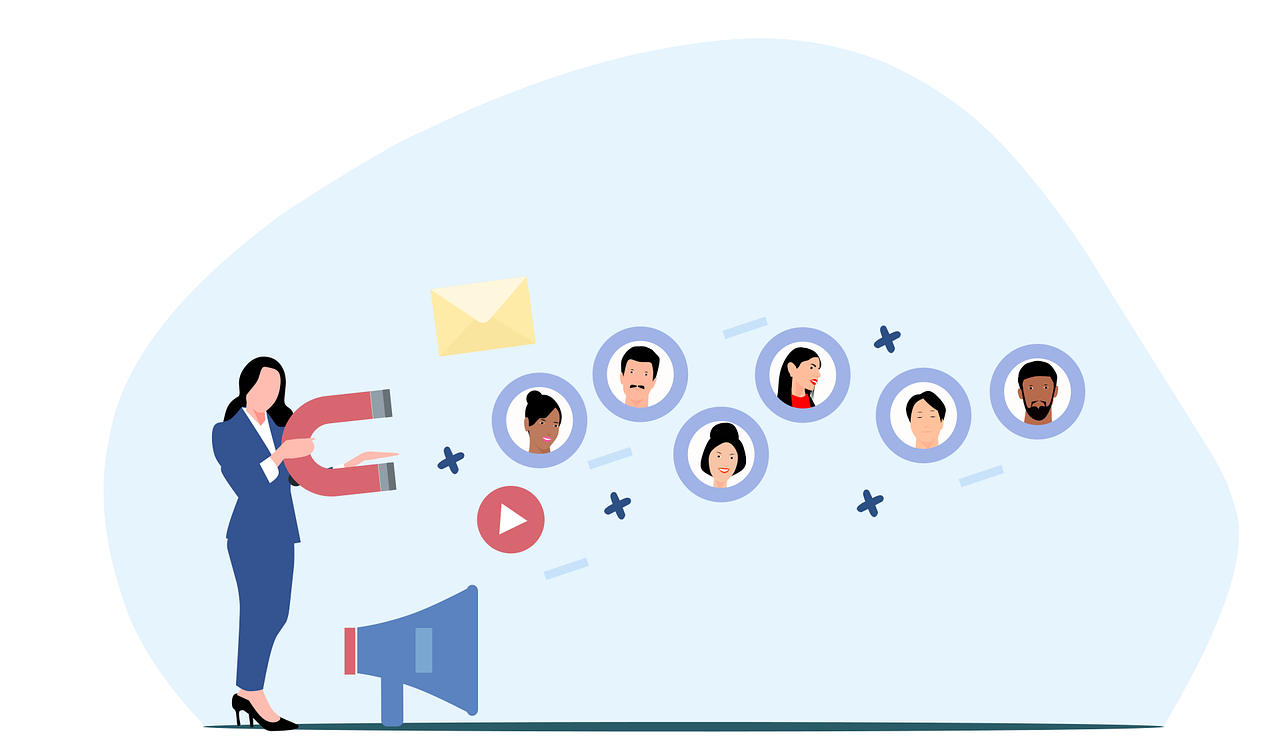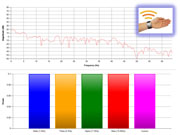
Nov
The Importance of Psychographic Segmentation in Brand Building
jerry9789 0 comments Brandview World, Burning Questions
What Is Psychographic Segmentation?
![]() So you’ve completed your research on the demographics of your online perfume store and you’ve seen that women in their twenties in Seattle were your top buyers. That’s great, you thought as your mind started to work on the outlines of your next campaign targeted towards these women. However, you discovered upon going through the data one more time that your perfumes are just as popular with forty-something-year-old women in Las Vegas. And when you went to double-check again you discovered another group of women around 25 years old being ardent supporters of your perfumes, but this time they’re from New York.
So you’ve completed your research on the demographics of your online perfume store and you’ve seen that women in their twenties in Seattle were your top buyers. That’s great, you thought as your mind started to work on the outlines of your next campaign targeted towards these women. However, you discovered upon going through the data one more time that your perfumes are just as popular with forty-something-year-old women in Las Vegas. And when you went to double-check again you discovered another group of women around 25 years old being ardent supporters of your perfumes, but this time they’re from New York.
Now how do you go about your marketing given that you would need to adjust it to target your top demographic? Sure, you’ve identified your best patrons as women between 20 and 50 years old but aside from the different locations, you’re not quite sure now what else sets them apart, which could poke holes in your messaging and cause it to fail to resonate with a number of them.
This exercise shows you the limitations of demographic-based marketing. Demographics answer the question “Who are your buyers?” but in order for your efforts to become more effective, you need to go deeper by answering “Why are they buying?” And this is where psychographic segmentation comes in.
Psychographic segmentation is the process of grouping consumers according to their motivations, goals, attitudes, opinions, beliefs and other psychological factors. It helps you better understand what drives purchase decisions. Not only does psychographic segmentation allow you diversify your marketing and reach out to different groups of consumers, it also allows you to create or customize products or services to cater to the varying needs of your buyers.
Copyright Elf-Moondance (Pixabay)
Why is Psychographic Segmentation Important in Brand Building?
Going back to the earlier scenario, you decided to reach out to your target demographic through an online survey, explaining it would help you understand them and serve their needs better. Based on the responses you received, you discovered that these women between 20 and 50 years old from different states appreciated the sweet-smelling but unique line of perfumes you’ve been selling at cost-effective pricing with efficient delivery times. Thus, the messaging of your next campaign highlighted the popularity of your sweet-scented perfumes, competitive pricing, and quick delivery. And the next time the opportunity presented itself, you even went as far as offering free delivery for a limited time.
Because you’ve used psychographic segmentation to break your market into different groups, you’ve also become aware of your other customer segments, which opened up marketing strategies you could leverage towards these subsets. Let’s say one of these groups was composed of regular clients who — although they didn’t buy as much as the earlier group we’ve discussed — you discovered frequently bought a certain perfume. Upon further research, surveys, and interviews of some of the members of this segment, you found that you’re the only online perfume shop that carried this fragrance. This then allowed you to branch out with new marketing which put a spotlight on the fact that this hard-to-find scent could only be bought at your online store, tapping into more potential customers falling under this segment. This also opened up more research on what fragrances your competitors didn’t offer but which your brand carried as well as the development of new unique perfumes that one wouldn’t find anywhere else online.
Psychographic segmentation not only gave you an understanding of the “why” behind purchases, it also granted you actionable insights on selling more of your products. With this data-driven approach, your brand is able to create different marketing playbooks for your various customer segments. The buyer’s journey would be different per customer, but in their minds there is only one brand that’s on top when it comes to a selection of unique scents at great prices and fast turnaround time for delivery.
Copyright Mohamed_hassan (Pixabay)
What Are Psychographic Segmentation Variables?
So how do you group your market according to your psychographic segmentation data? While there are several types of psychographic data on which you could base the customer segments you’ll be forming, indeed.com listed the following as the five main psychographic segmentation variables:
1. Personality – This variable refers to the beliefs, motivations, behaviors, and overall outlook of your target audience. You can group your customers based on personality traits like creativity, sociability, optimism, empathy, etc.
2. Lifestyle – This variable focuses on the daily habits and preferences of a customer, including how they spend their time and things they consider important.
3. Social class – This variable assumes preferences based on income level and spending power. It can also influence how a product is priced or whether it should be marketed as a luxury.
4. Attitudes – This variable considers the behavior of a customer based on their background and values. An example would be an animal lover who leans towards perfume brands that are known to be cruelty-free, meaning they don’t test their products on animals.
5. AIO (Activities, Interests and Opinions) – This variable groups consumers based on what they similarly enjoy or are passionate about. The second scenario earlier where you discovered the subset of regular customers purchasing the hard-to-find fragrance is an example of this variable.
Copyright geralt (Pixabay)
Personas vs. Psychographic Segmentation
While it might be easy to confuse psychographic segmentation with personas, these two concepts are subtly different. Psychographic segmentation groups your markets according to similar psychological traits and can therefore present a whole-market picture of consumers, spanning the range from those who passionately love your market offering to those who dislike it or resist it. This whole-market look also gives you the ability to attach real numbers to the data, enabling you to do things like demand forecasting, market sizing, receptivity studies based on counts of prospects, and the like.
Personas, on the other hand, are profiles — portraits of individual persons. They are more specific, detailed, and focused. Think of a police profile of a crime suspect (just the format of it, not the content.) A well-drawn persona presents a fictionalized representation of your ideal buyer, with information about key traits of that person. You might describe these traits by saying something like “likes to splurge on expensive vacations,” or “typically employed in middle-echelon white-collar jobs like administrative staff, etc.” The persona provides a vivid description of that individual, so you can better understand how to appeal to that kind of person with marketing campaigns and other forms of brand outreach. A good persona description humanizes the data and gives it a relatable face.
Please click here to find out more about segmentation studies, including some interesting case histories. Cascade Strategies has for over three decades been assisting top US and international companies with high quality market research and superior thinking in identifying and focusing on their most profit-optimal consumers. If you would like to find out more, or learn how Cascade Strategies can help provide brand development research for your specific marketing needs, feel free contact us here.

Sep
What It Means to Choose or Decide In The Age of AI
jerry9789 0 comments artificial intelligence, Burning Questions
Longstanding Concerns Over AI
From an open letter endorsed by tech leaders like Elon Musk and Steve Wozniak which proposed a six-month pause on AI development to Henry Kissinger co-writing a book on the pitfalls of unchecked, self-learning machines, it may come as no surprise that AI’s mainstream rise comes with its own share of caution and warnings. But these worries didn’t pop up with the sudden popularity of AI apps like ChatGPT; rather, concerns over AI’s influence have existed decades long before, expressed even by one of its early researchers, Joseph Weizenbaum.
ELIZA
In his book Computer Power and Human Reason: From Judgment to Calculation (1976), Weizenbaum recounted how he gradually transitioned from exalting the advancement of computer technology to a cautionary, philosophical outlook on machines imitating human behavior. As encapsulated in a 1996 review of his book by Amy Stout, Weizenbaum created a natural-language processing system he called ELIZA which is capable of conversing in a human-like fashion. When ELIZA began to be considered by psychiatrists for human therapy and his own secretary interacted with it too personally for Weizenbaum’s comfort, it led him to start pondering philosophically on what would be lost when aspects of humanity are compromised for production and efficiency.
Copyright chenspec (Pixabay)
The Importance of Human Intelligence
Weizenbaum posits that human intelligence can’t be simply measured nor can it be restricted by rationality. Human intelligence isn’t just scientific as it is also artistic and creative. He remarked with the following on what a monopoly of scientific approach would stand for, “We can count, but we are rapidly forgetting how to say what is worth counting and why.”
Weizenbaum’s ambivalence towards computer technology is further supported by the distinction he made between deciding and choosing; a computer can make decisions based on its calculation and programming but it can not ultimately choose since that requires judgment which is capable of factoring in emotions, values, and experience. Choice fundamentally is a human quality. Thus, we shouldn’t leave the most important decisions to be made for us by machines but rather, resolve matters from a perspective of choice and human understanding.
AI and Human Intelligence in Market Research
In the field of market research, AI is being utilized to analyze a multitude of data to produce accurate and actionable results or insights. One such example is deep learning models which, as Health IT Analytics explains, filter data through a cascade of multiple layers. Each successive layer improves its result by using or “learning” from the output of the previous one. This means the more data deep learning models process, the more accurate the results they provide thanks to the continuing refinement of their ability to correlate and connect information.
While you can depend on the accuracy of AI-generated results, Cascade Strategies takes it one step further by applying a high level of human thinking. This allows Cascade Strategies to interpret and unravel insights a machine would’ve otherwise missed because it can only decide, not choose.
Take a look at the market research project we performed for HP to help create a new marketing campaign. As part of our efforts, we chose to employ very perceptive researchers to spend time with worldwide HP engineers as well as engineers from other companies.
This resulted in our researchers discovering that HP engineers showed greater qualities of “mentorship” than other engineers. Yes, conducting their own technical work was important but just as significant for them was the opportunity to impart to others, especially younger people, what they were doing and why what they were doing was important. This deeper level of understanding led the way for a different approach to expressing the meaning of the HP brand for people and ultimately resulted in the award-winning and profitable “Mentor” campaign.
If you’re tired of the hype about AI-generated market research results and would like more thoughtful and original solutions for your brand, choose the high level of intuitive, interpretive, and synthesis-building thinking Cascade Strategies brings to the table. Please visit https://cascadestrategies.com/ to learn more about Cascade Strategies and more examples of our better thinking for clients.

Aug
How Can Healthcare Companies Identify Who Needs Remediation Programs?
jerry9789 0 comments artificial intelligence, Burning Questions
What Is Remediation?
The Cambridge Dictionary defines remediation as “the process of improving or correcting a situation.” Remediation programs are commonly employed in teaching and education wherein they address learning gaps by reteaching basic skills with a focus on core areas like reading and math. And as pointed out in an understood.org article, remedial programs are expanding in many places in our post-COVID 19 world.
In healthcare, there’s a wide range of remediation programs, or “remedial care,” diversified based on their end goal which may include smoking cessation, anti-obesity, weight reduction, diet improvement, exercise, heart-healthy living, alcoholism treatment, drug treatment, and more. But how do you identify the people who need remedial care the most?
Who Needs Remediation?
You might say you can tell who needs remedial care by just looking at the physical aspect of the prospective patient, but this is a shortsighted answer to the question. And what about those who need remedial care for a heart-healthy lifestyle? Surely you can’t tell a likely candidate for this remediation program with just one look alone.
It goes deeper than that. What if you, a healthcare representative, could only devote remedial care to a select few individuals given limited resources and time but you want to make sure that the whole remediation program is successful by achieving its intended goals? Just imagine all that time, effort and resources spent only for the patient to relapse back into their old ways not too long after program completion- or even in the middle of the remediation process itself.
Deep Learning and Remediation
This is where deep learning comes in. Also known as hierarchical learning or deep structured learning, Health IT Analytics defines deep learning as a type of machine learning that uses a layered algorithmic architecture to analyze data. In deep learning models, data is filtered through a cascade of multiple layers, with each successive layer using the output from the previous one to inform its results. Deep learning models can become more and more accurate as they process more data, essentially learning from previous results to refine their ability to make correlations and connections.
Deep learning models handle and process huge volumes of complex data through multi-layered analytics to provide fast, accurate, and actionable results or insights. When applied to the scenario we mentioned beforehand, deep learning filters through that multitude of patient data and prioritizes those who need remedial care the most.
You can also align its findings to effectively identify individuals who will not only return monetary value to your healthcare brand, but at the same time are most likely to “engage” or participate in programs offered by your company, such as wellness, diet, fitness or exercise. They can also be the best people to commit to avoiding poor lifestyle choices, such as overeating, smoking, and alcohol, helping guarantee the success of the remediation program.
With a combination of three decades of market research experience and conscientious use of AI, Cascade Strategies has been helping healthcare organizations develop advanced models to handle, filter and identify the likeliest of candidates for their program purposes. Cascade Strategies helps industry professionals not only recognize their ideal customers but also reach out to them with some of the most effective and award-winning marketing campaigns, thanks to our array of services such as Brand Development Research and Segmentation Studies. To see more examples of how we help leading worldwide companies achieve their goals, please visit our website.
Here are some of our suggestions for further reading on deep learning and healthcare:
https://builtin.com/artificial-intelligence/machine-learning-healthcare
https://research.aimultiple.com/deep-learning-in-healthcare/
https://healthitanalytics.com/features/types-of-deep-learning-their-uses-in-healthcare

Jun
Kyle Byers of Exploding Topics has written recently about nine key trends in the CPG industry. We’d like to focus on those nine trends below, add one of our own, and talk about how market research has responded to these trends.
From food and drinks to apparel and cosmetics, consumer packaged goods (CPG) are a vital part of everyday life for most consumers and households. Since these products are mostly disposable, there is a regular need and consistent demand for replenishment or replacement, forming the basis for a competitive environment for all brands.
The CPG market has significantly and steadily grown despite the competition and even more so with the COVID-19 pandemic. It was valued at $2.06 trillion in 2021 and with a compound annual growth rate (CAGR) of 3.5%, it is estimated to reach $2.8 trillion by 2030.
In addition to the pandemic, new technologies and consumption habits have contributed to the rapidly changing face of the CPG industry. From direct to consumer (DTC) to sustainability to product personalization, we’ll take a closer look at 10 of the most important trends impacting the CPG industry right now.
1. Legacy CPG Companies Join DTC
DTC online sales growth in 2022 is estimated at $138.03 billion, so you can understand why CPG industry stalwarts couldn’t ignore the DTC wave any longer, joining the trend three ways. First by acquiring competitors, like Unilever who counts Dollar Shave Club, Schmidt’s Naturals and UK-based Graze among its many DTC acquisitions since 2015. Second, they are launching entirely new brands, like Procter & Gamble’s EC30 which is an eco-oriented brand of dissolvable, solid-form soaps and cleaning products. And thirdly, by launching DTC sites like PepsiCo’s PantryShop.com and Snacks.com. These sites went up during the Coronavirus pandemic and PepsiCo nearly doubled their DTC sales in Q3 2020.
2. CPG Startups Emerge to Make Their Mark
Without a middleman and the need for retail shelf space, the DTC business model fosters competition. Many DTC startups use a subscription model to generate steady and recurring revenue, allowing them to take a bite out of the market at the expense of traditional CPG brands. For example, Gillette saw its 70% share of the US razor market go down under 50% within a decade due to competition from Dollar Shave Club and Harrys.
3. More Retailers Launch Private Label Brands
Availability issues during the pandemic have partly contributed to the popularity of private-label products. With 65% of shoppers saying they’ll switch brands if prices are too high, being an affordable alternative also helps private-label brands gain ground in the market. Think Amazon’s private-label clothing brand Goodthreads, which is competing against big brands H&M, Levi’s, and Uniqlo. Better margins and direct control over product development have also convinced retailers like Walmart and Kroger to launch their own consumer brands.
4. Faster and Easier Delivery Than Ever Before
With the pandemic pushing e-commerce into overdrive, access to faster and easier delivery options is becoming a key point in purchasing decisions, according to 68% of shoppers in a recent survey. 85% of online shoppers say they will search for someplace else if the delivery time is too long, while 30% of consumers expect same-day delivery. This need for speed has given rise to dedicated fast-delivery CPG retailers like GoPuff who are offering to deliver not in days or even hours but in minutes.
Copyright Pixabay (Pexels)
5. Focus on The Omni-Channel CPG Shopping Experience
More and more CPG brands and retailers are pushing for omni-channel shopping, allowing a smooth and seamless purchasing experience across different devices, or even between in-store and online. To illustrate: Sephora enhanced in-store experience by letting customers access their online shopping lists called “Loves” on large screens inside stores with the help of in-store tablets. Compared to single-channel brands, CPG companies that utilize at least three retail channels have shown a 287% higher purchase rate.
6. Expanded Omni-Channel CPG Marketing
CPG companies are also leveling up their marketing with a more omni-channel approach. TV ads, product placements, PR, and digital marketing methods like PPC ads, which have proven their effectiveness time and time again, are now joined by the new kid on the block: influencer marketing. Even with as few as 1,000 social media followers, “micro” and “nano” influencers are able to deliver results for CPG brands tapping into these smaller, more focused niche experts.
7. Sustainability and Clear Brand Values Are More Important Than Ever
Another thing that the pandemic accelerated is the rise of green consumerism. Many consumers, mainly Gen Z, now avoid brands that don’t align with their stance on the environment and other sustainability issues. 53% of Internet users have expressed intentions to switch products or services if a company violates their personal values or they weren’t sustainability-focused.
8. Self-Care Product Demand Is Rising
The pandemic also brought to the fore holistic self-care, where consumers use multiple products to optimize their health and wellness. Skincare products are now outselling makeup, thanks to millennials who spend more on self-care than any previous generation, and CPG brands like CeraVe and DRMTLGY who have jumped at this opportunity.
Products containing cannabidiol, also known as CBD, were not legal nationwide in the US until 2018. Now, CBD products are a rapidly growing part of the self-care category, with sales at $4.6 billion in 2020 and expected growth of over $16 billion in 2026.
9. Growing Popularity of Product Personalization
Offering a personalized experience through product quizzes can boost e-commerce conversion rates while building direct, one-to-one relationships with customers. This was the goal behind beauty brand Tatcha offering personalization via its Ritual Finder tool.
In fact, 71% of consumers expect personalized interactions according to McKinsey. Conversely, 76% get frustrated when they don’t get them. 60% of consumers say they’ll become repeat customers after a personalized shopping experience.
Copyright Polina Tankilevitch
10. Gen Z Is Becoming a Major Part Of The Consumer Market
We’ve hinted this earlier, but this trend is just as impactful as the others, especially with the $143 billion of spending power that allows Gen Z to make up 40% of the entire global consumer market. With the shift to digital commerce, companies need to find creative and effective ways to tap into this massive demographic group and understand their buying patterns, especially with regard to social media. Did you know that 97% of Gen Z purchasing decisions are heavily influenced by social media, with 48% of consumers now likely to purchase directly from TikTok?
How Market Research Has Responded to These Trends
Based on these trends, we can assume the CPG market is moving into a personalized and multi-channel direction where leading brands are recognized not only for their competitive price points but also for their value propositions. There are four key ways in which the Market Research industry has responded to these trends and provided newer and more incisive tools for understanding consumer behavior.
1. The Shift from Perceptual Research to Transactional Research
Pandemic restrictions have long been lifted and brick-and-mortar locations have reopened, but there’s no denying that consumers have embraced e-commerce and the convenience it offers. Consumers will still appreciate the opportunity to test products in person with in-store shopping, but when there isn’t such a necessity, e-commerce becomes the go-to sales channel. This is especially true for those who have already established loyalty to a particular brand. Following this trend, there’s been a seismic shift away from perceptual research dealing with the in-store experience to customer research dealing mainly with degree of satisfaction at certain touchpoints in the e-commerce funnel.
Brand and Insights Managers increasingly seek hard metrics to support specific e-commerce initiatives, including product depictions on small and large screens, comparative text descriptions, active displays involving motion, sound, and animation, features such as reviews, promotion codes, side-by-side comparisons, visual try-it-on-yourself options, and options for shipping, group discounts, buy-now-pay-later offers, and repeat-purchase and subscription-purchase offers. While perceptual research can guide them in a general way, the degree-of-satisfaction metrics at these touchpoints in the shopping experience deliver more hard value to the decision maker who is tasked with determining the effectiveness of e-commerce marketing methods.
2. From Qualitative to Quantitative Methodologies
Another development is the shift away from common qualitative methodologies to quantitative methodologies. For example, years ago there was much more exploration of the spatial shopping experience via in-person focus groups, shop-alongs, visual diaries, ethnographies, and the like. A good deal of that has transitioned to quantitative research using direct metrics such as scalar degree-of-satisfaction measures delivered via web and text.
Fundamentally, the need-to-know among contemporary Brand Managers and Insights Managers is not so much “how does my brand’s expression attract consumers?” as it is “how satisfied are consumers with their experiences with my brand?” The first concern was well served by a variety of qualitative methodologies. While it’s still an active concern, it has declined somewhat, while the second concern has become white-hot. Quantitative methodologies on the whole do a better job of serving this second concern than qualitative methodologies do, especially given that brand “experiences” in the current day are less spatial and more virtual. This makes it easier to ask a consumer a transactional question such as “how did it go for you?” while the consumer’s mind is still fresh on the subject.
3. Less Packaging Research
There was a 30-year fascination – even obsession in some cases – with intriguing methodologies in packaging research, pioneered by big packaged goods companies like P&G, PepsiCo, Unilever, etc. These included eye tracking, neurometrics, GSR measurement, EKG measurement, facial coding, Virtual Reality and Augmented Reality simulations, million-dollar “cave” immersive environments, and more. These methodologies are still very much alive, but their application is different. At one time they were widely applied to virtually any inquiry associated with packaging or any stage in the PLM journey: product ideation, prototyping, functional testing, price/value research, comparative attribute research, virtual or physical shelf testing, test marketing, advertising, and even compliance. Now the applications are more narrowly focused on specific research outcomes, and maybe that’s a good thing.
For example, the fragrance people still love biometric methods, and the website testing people still love eye tracking. The people doing that research have specific research outcomes in mind, and these outcomes are often metric rather than perceptual. Are psychic arousals produced by certain aromas? Where do the eyes go when looking at a web page? These questions can be answered metrically via the biometric data. And these are experimental venues where the brain-body response can legitimately be expected to be driven by environmental stimuli – at least enough to be measured by instruments.
As a result, there’s less packaging research in the packaged goods business. The truth is that there’s less keen interest among Brand and Insights Managers in whether the packaging is compelling in a spatial retail environment. There’s more interest in the transaction itself. Brand and Insights Managers want to learn less about the motivations and behaviors involved in wanting the product and more about the motivations and behaviors involved in buying the product.
4. Systems as a Source of Insight
There is also now a greater focus on systems as a source of insight. For years, market research was the primary source of brand insight, so humans were involved by definition. Now the dominant sentiment is that insights come from machines, and humans tend the machines.
Marketing decision-makers are often heavily engaged in the determination of which analytics platform(s) will be implemented at their company, installing the platform and training users, maintaining the security of that platform, licensing issues, system upgrades, patches, maintenance advisories, hardware issues, and more. None of this has anything to do with deriving insights for the brand.
Copyright PhotoMIX-Company
The thought pattern here is that this time is well spent because insights arise from machines, not human effort. A human-focused effort to produce brand insights is still occasionally used, but it’s sort of like a landline phone: interesting but not contemporary.
Brand and Insights Managers in the current day have a passing interest in human-focused market research when the machines cannot produce the insight or do a poor job of it. An example would be the development of a vibrant persona for the brand, or a comprehensive market segmentation scheme involving all competitive brands. Systems and platforms can actually do this (including AI-assisted systems and platforms), but their outcomes are invariably suboptimal. The systems are recursive, and they therefore regurgitate the best-available summarizations of the data inputs they receive. Since they don’t have the intuitive, interpretive, and synthesis-building power of the human brain (especially the right brain), they cannot extrapolate to the level of excellence in their outcomes. In other words, they render mediocrity permanent.
It takes a brain strain – a smart person or two striving with higher intuitive/interpretive layers of thinking and understanding to discover solutions that cannot be reached by simply summarizing human experience on a topic – to produce excellence in these outcomes. The greater unanswered question is whether Brand and Insight Managers want excellence. These managers may be a little more system- and process-driven in their thinking, and they therefore may prefer a large volume of mediocre solutions rather than a single solution at the level of excellence.
How We Approach These Issues at Cascade Strategies
There’s currently a raging debate about the appropriateness and utility of applying AI instruments, especially ChatGPT, to marketing questions typically answered by market research and discussed in this article. Our point of view on this topic can be summarized by the term “Appropriate Use.”
Clearly, there’s big first-party data involved with these CPG trends, especially with DTC. While AI-powered analysis and interpretation of this big data can efficiently and quickly produce objective and accurate results, there is a space that AI is unable to touch and thus falls short of effectively leveraging data to make informed decisions. This area is where the intuitive, interpretive, and synthesis-building capacities of the right brain excel. Here data-driven decision-making could potentially access a different yet extraordinary set of insights, themes and recommendations anchored by human values and experience.
But sophisticated solutions at this level – the level of excellence – might remain undiscovered since machines don’t have the ability to relate to the data on an intuitive and interpretive level. A more enlightened “Appropriate Use” concept, which elevates the role of human inspiration and agency, could lead to more innovative and creative ideas about how CPG companies can optimize operations, forecast sales, develop products, enhance marketing strategies, focus on the most profit-optimal consumers, and develop the most compelling messages for those consumers.
For 33 years Cascade Strategies has demonstrated the capacity to maintain this kind of machine-versus-man balance for leading worldwide companies and thus produce excellence in thinking and outcomes. Please see examples of our higher thinking for clients at https://cascadestrategies.com.

Jun
How Great Research Produces Great Campaigns
jerry9789 0 comments artificial intelligence, Brand Surveys and Testing, Brandview World, Burning Questions
Can AI Produce Your Marketing Campaign?
If you were given the task of developing a global communications campaign for a technical products company, would you let ChatGPT do it?
 You might, especially if you noted that ChatGPT could churn out dozens of ads like the one above without paying art directors, copywriters, media professionals, or users of a Demand Side Platform.
You might, especially if you noted that ChatGPT could churn out dozens of ads like the one above without paying art directors, copywriters, media professionals, or users of a Demand Side Platform.
But we wouldn’t. This is because it’s hard for AI to produce at the level of excellence, and excellence is what should be sought.
Seeking Excellence in Marketing Campaigns
The ad below is part of an award-winning and profitable “Mentor” campaign for HP. To arrive at this level, HP had to commission very perceptive researchers to spend time with worldwide HP engineers as well as engineers from other companies.
The researchers stretched the intuitive, interpretive, and synthesis-building capacities of their right brains to arrive at a subtle insight that AI would have great difficulty seeing: that HP engineers showed greater qualities of “mentorship” than other engineers. They thought it was important not only to conduct their own technical work, but to impart to others (typically younger people) what they were doing and why what they were doing was important.
It would be very hard indeed to stretch an AI chatbot (or other AI engine) to that deeper level of understanding about what a truly extraordinary ad should do to express the true meaning of a brand to people.
An example from the world of sunglasses
If you were given the job of developing a campaign for a line of sunglasses, you could probably get ChatGPT to produce a large number of ads like the following at little or no cost (with the exception of the cost of the talent).
 But AI-produced ads fall short of excellence. AI simply cannot do the incisive interpretive work that humans can do to produce something better.
But AI-produced ads fall short of excellence. AI simply cannot do the incisive interpretive work that humans can do to produce something better.
Researchers working for the Gargoyles brand of sunglasses spent time with those who preferred this brand and made a discovery about them that AI engines would have great difficulty seeing: that many Gargoyles wearers were upward strivers who were at first destined to fail, then turned things around with drive, verve, and strenuous effort.
 They had a “storyline of life” worth admiring. To gain this insight, the researchers had to stretch the intuitive and interpretive powers of their brains. They could not simply rely on a summarization of prior human experience in producing ads about sunglasses.
They had a “storyline of life” worth admiring. To gain this insight, the researchers had to stretch the intuitive and interpretive powers of their brains. They could not simply rely on a summarization of prior human experience in producing ads about sunglasses.
Higher powers AI cannot reach
AI cannot stretch to this level of excellence. It cannot see broader levels of human experience that may be required to produce excellence, such as “how could sunglasses have anything to do with striving?” or “how could a life story of struggling ever be associated with sunglasses?” Hell, generative AI wouldn’t even think to inquire about a storyline of life. But humans can do that when their right brains are performing at a very high level.
The researchers in this case had to sweat the details a little more, spend quality time pondering the higher thematic levels, and drive their brains well beyond summarization to a more sublime expression of the true meaning of a brand to people.
This is the kind of work Cascade Strategies does on a daily basis. Please have a look at some other examples of higher thinking for clients at https://cascadestrategies.com.
People are catching on and speaking out
More people are seeing the chasm between the summarization of human experience that AI can provide and the excellence provided by the greater intuitive powers of the human brain, and they are speaking out about it. One example is Po-Shen Loh, a charismatic math coach who directly confronts AI, challenging his students to attack complex math problems at higher levels of understanding and interpretation than AI could ever provide.
But there are even more people who are discovering this excellence gap, and their voices will grow stronger.

Jun
How Great Research Helps Tech Companies
jerry9789 0 comments artificial intelligence, Brand Surveys and Testing, Brandview World, Burning Questions
How Well do you Understand Your Customers’ Needs?
As a Tech Company, how well do you know your customers? In most cases, identifying who has an affinity for your brand and focusing on the needs of that customer type can spell success for your products, especially the launch of your new offerings.
Sure, you might think you can have AI go over your customer database and hope it’s able to recognize customers and prospects most likely to purchase your product. However, AI shortcuts are unable to approach the intuitive and interpretive power of human thinking, let alone the kind performing at a high and excellent level.
The Story of HP Test & Measurement
The case of Hewlett Packard’s “Mentor” campaign is instructive. HP commissioned our researchers to spend quality time with worldwide HP engineers as well as engineers from other companies, learning about their daily lives – how they think, feel, and behave. The researchers stretched the intuitive, interpretive, and synthesis-building capacities of their right brains to arrive at a subtle insight that AI would have great difficulty seeing: that HP engineers showed greater qualities of “mentorship” than other engineers.
The result was a highly successful, award-winning global campaign. Conversion rates soared as HP logged higher equipment sales in virtually every world region. The campaign also produced significant financial gains for HP and won an ADDY Award for creativity.
The Squaresoft Video Games Story
We also conducted primary market research for Squaresoft Video Games to determine affinities for their products. They had been sending out about 200,000 mail pieces per month to key metros across the US. By giving us extracts of their file of purchases of similar games, we appended characteristics and modeled affinities for prospective buyers.
We called those most likely to respond “Videobrats.” The model reduced the number of markets to 4 key metros which had the highest concentration of “Videobrats,” concentrating their marketing on high-affinity households in these markets.
Our researchers spent a great deal of time with Videobrats in these markets, exploring their daily lives, discovering how they think, how they interact with others, and how they spend time with entertainment and gaming software. This hard work produced a key set of insights that could be perceived only through the intuitive and interpretive power of the human mind. It’s not something AI could touch.
The result was a campaign of extraordinary power and great marketplace success. Squaresoft reported dramatically increased sales of the two game titles in the specific geographies in question, ranging from 20% to 200%. Not only that, the “Videobrats” campaign won the KPMG Award of Merit for ROI performance and the Ernst & Young Most Effective Marketing Campaign Award.
The Lessons for Marketing in the Tech Sector
Many people conducting marketing campaigns in the tech sector believe you just need to tell people on the web what you have (e.g., software, hardware, systems), and the magic of internet targeting will take care of the rest. They’re wrong. It’s as important in tech as in any other category to tell people why they should want the software, hardware, or systems from your brand instead of another brand. That requires you to express something about what psychologically or emotionally binds your customers to your brand.
Discovering the root of these deeper connections requires more complex layers of understanding and perception than AI can provide at present. Hard-working humans driving their minds to higher levels of interpretation and synthesis can do it.
When market research is used not just as a means to an end but as a way to gain a deeper understanding, Tech Companies are able to produce outstanding results because they are able to come up with inspired and creative solutions addressing the needs of those who value their brand the most. AI is unable to unlock these sophisticated types of solutions because it’s unable to relate on an intuitive and interpretive level the same way excellent human thinking does.
If you’d like to see this kind of magic brought to life for your brand, please reach out to us here.

Jan
Curious About AI in Marketing? 7 Critical Questions
jerry9789 0 comments artificial intelligence, Burning Questions
Artificial Intelligence(AI) has recently been integrated into marketing and is still in its early stages. It makes automated decisions based on available data and audience observations or economic trends that impact marketing. By doing so, it enables marketers to gain more insight and understanding of their target audiences.
However, a business must comprehend how AI Marketing works and its effects before adopting it. Here are seven questions every company interested in AI Marketing should ask themselves.

Jul
As many of us already know, the survey can be an invaluable tool for monitoring the needs and desires of your customer base. However, many of us have also found that surveys conducted online are often little less than irritating…
Pop-up surveys are now one of the most popular techniques employed to collect information from website visitors, but they also can be quite irksome to some people. The annoyance factor here stems from two issues: (1) These surveys pop-up right at the moment when they are least welcome and make you click on them to close the window, and (2) they often ask the customer to take a survey that may not align with their current mood or objective.

Jun
Performing successful market research that sets you apart from the competition requires the gathering of insights, rather than just the compiling of information. Insightful interpretation can really set your data apart from others while also allowing for novel means of reaching different consumers for any kind of business. Really, rather than concentrating on a specific project, it can actually be more helpful nowadays to set out to discover insights for a variety of topics to better understand the dynamics and motivators of target groups. We discuss ways that you can incorporate an insight-based approach to your marketing research process here.

Jun
Nowadays, it’s growing increasingly common for businesses to turn to neuroscience to address their marketing needs, especially since it seems that business has
 challenges only neuroscience can solve. Behaviorists will tell us that humans are irrational creatures—we often make decisions based on information that is incomplete. We also take mental shortcuts.
challenges only neuroscience can solve. Behaviorists will tell us that humans are irrational creatures—we often make decisions based on information that is incomplete. We also take mental shortcuts.
Why we err in the first place, however, is not completely explained by behavioral science or economics. However, neuroscience can really help us gain a foothold in understanding why and how consumers make certain decisions. Neuroscience adds value to business; it provides us with long sought after causal explanations for behavior. It also provides several methods that we can use to assess our unconscious mental processes.






















